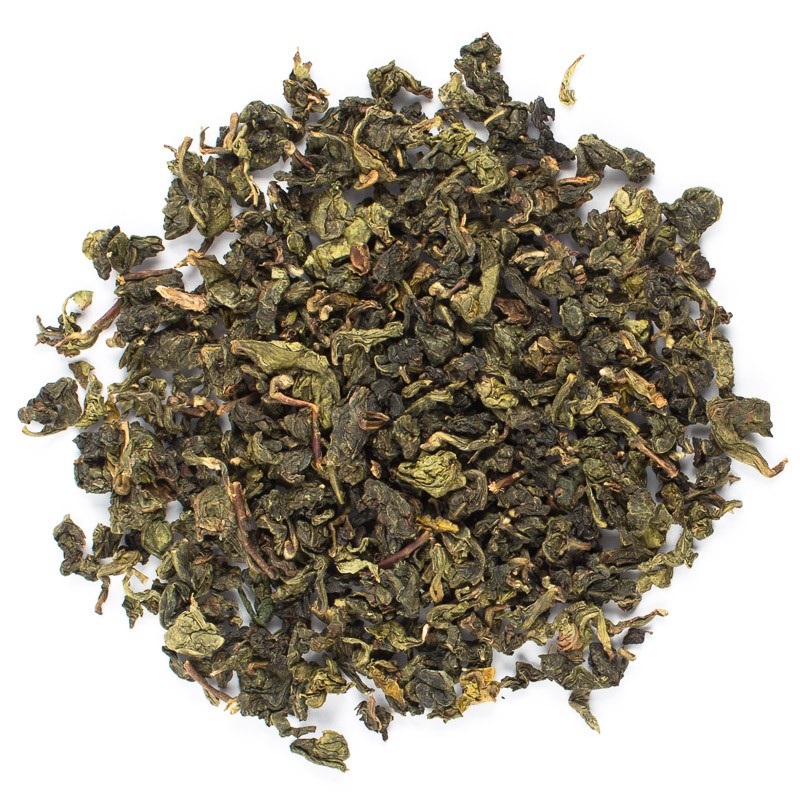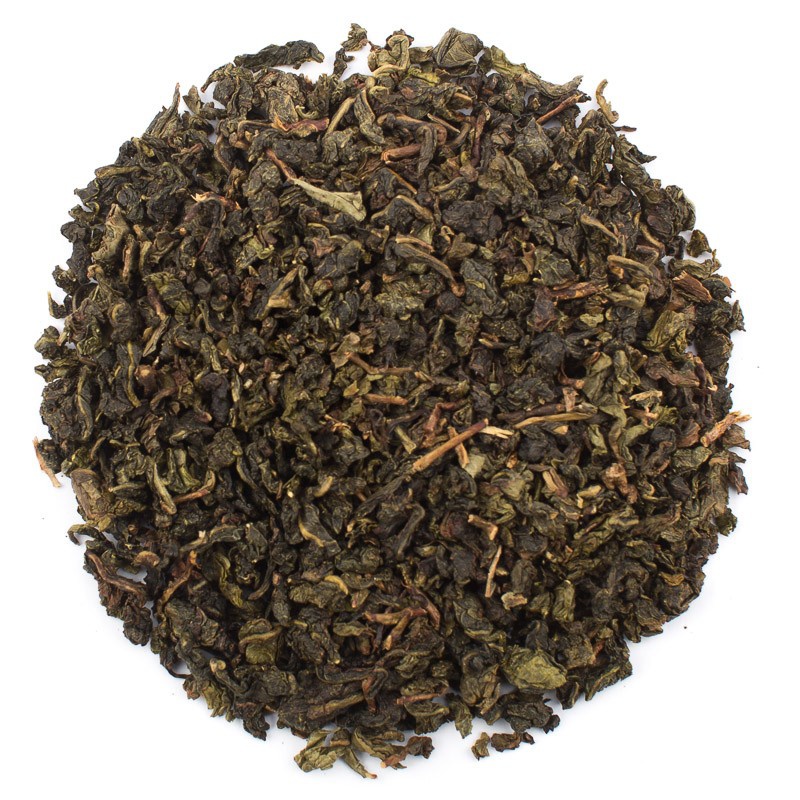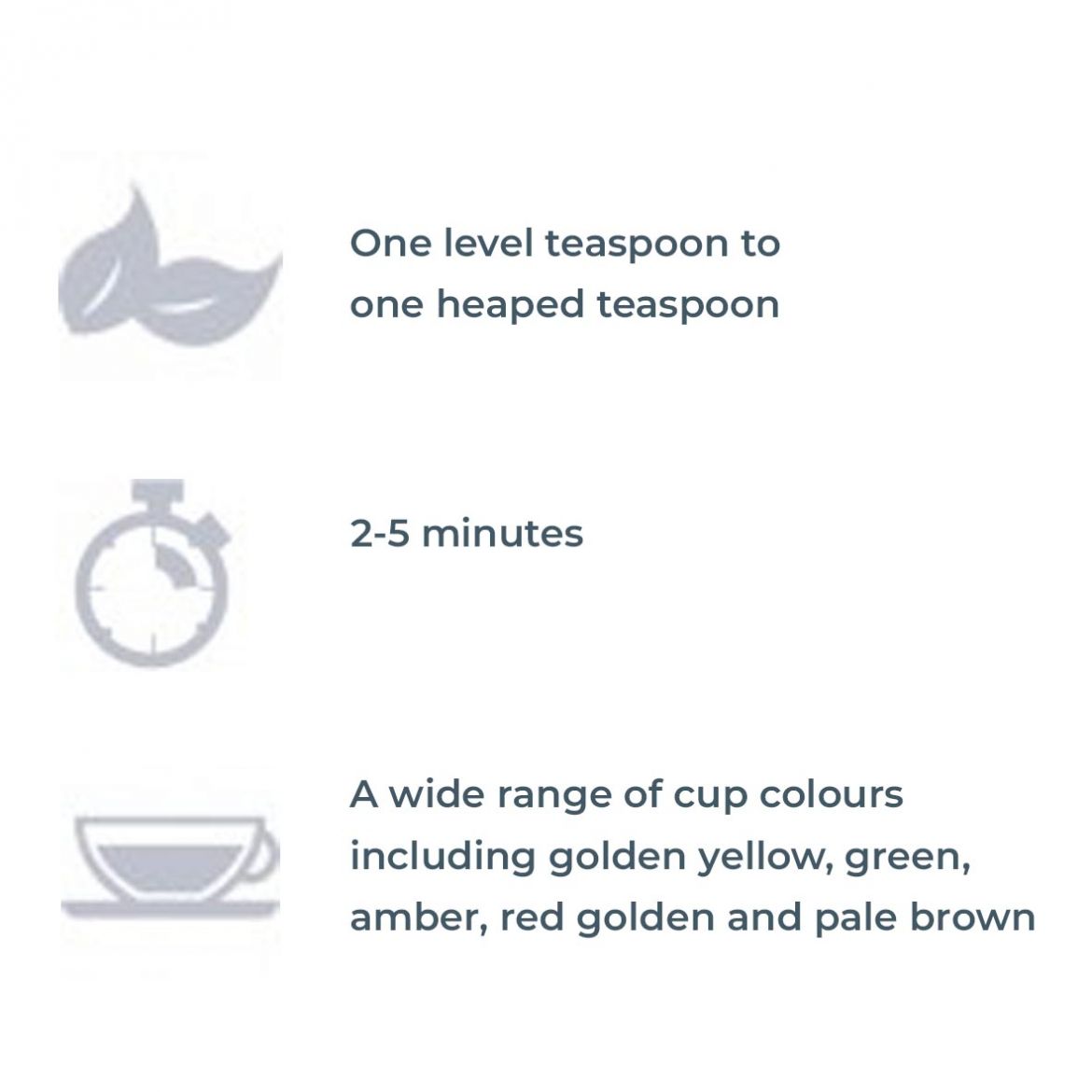GUIDE TO OOLONG TEA
Oolong is a tea of distinction with exquisite flavours that sit between black and green teas. A truly special tea!
Many people have heard of Oolong tea, but few can define it. Oolong originates in China but many varieties are now produced in Taiwan. Its long, dark leaves, redolent of dragons’ tails, are what give oolong tea its Chinese name: ‘Wu Long’, meaning ‘black dragon’.
Tea plants used to manufacture just about any tea can also be used to produce oolong, but the special processing used is considered a high-art form with mastery of this skill taking many years to perfect.
Oolong tea is made using partially-oxidised leaves, which means its character varies according to the degree of fermentation. For example, light oolong teas like our Oolong Ti Dung, have a delicate, flowery taste, while a variety like Superior Fancy Oolong is much more like black tea.
Oolong teas can be either partially oxidised, a lighter processing style that makes it resemble a green tea, or heavily oxidized, giving them the taste, look and feel of a black tea.

PRODUCTION OF OOLONG TEA
The oolong tea making process is a complicated one! Oolong teas undergo more individual steps in processing than any other tea type. The quality of the fields, the atmosphere and growing conditions will impact the tea leaves but with oolong teas it is all about the skill of the processing. The end result is a tea that strengthens and evolves with each brew, with several layers of flavour from the subtle to the dark, rich and smoky.
All of the below steps are carefully monitored by the tea master, who decides when the leaves are to be moved to the next level of production. The master must rely primarily on the aroma of the leaves, a skill learned over time. Some of these tea masters can simply tell by the smell and aroma of the leaves when to move to the next step.
Process of an Oolong Tea:

PLUCKING – Leaves that are plucked need to be relatively large and durable to withstand the long processing. Oolong teas at lower elevations can be plucked up to 6 times a year whereas high mountain oolongs only 2-3 times because the cooler climate slows the growth of the tea plant.
WITHERING – Leaves are spread on a flat surface to wither, which will decrease their moisture. This process can be done in sunlight, partial shade or indoors. This process softens the tea leaves making them supple so they wont break during the rolling and shaping. Tea leaves are then lightly bruised by shaking or rolling them which allows the edges to begin oxidizing.
ROLLING – Leaves are then rolled to continue the oxidation. The rolling stage is sometimes interrupted intermittently with pan firing to halt the oxidation temporarily. This alteration between rolling and heating is often repeated many times to develop the layers of flavour for which oolongs are so famous.
OXIDATION – Oxidation is a chemical reaction that occurs when the compounds in the cells of tea leaves are exposed to oxygen, altering the flavour of the tea leaves and helping the tea develop its ultimate appearance and colour. Black tea is allowed to fully oxidize and green tea is barely oxidized at all. Oolong teas fall somewhere in between.
Sometimes no further oxidation is needed, like the Pouchong. Other oolongs require greater oxidation, such as Da Hong Pao and Bai Hao. The rolled leaves are left to rest for a few hours. A final drying is carried out by pan firing, which stops the oxidation and reduces moisture content. These oolongs will have a long, twisted leaf shape.
BAKING (OPTIONAL) – Some oolongs undergo an additional baking step. The finished tea is lightly baked in a low oven for more depth of taste and a typically slightly toasted finish. This process changes to tea to an amber oolong. You have to be careful not to confuse amber oolong with any type of oolong. Amber oolongs have either been treated to an additional baking process or are darker due to a longer oxidation time.
EXTRA STEP ROLLING (OPTIONAL) – Some Oolongs, such as Ti Dung (Tung Ting) and Tie Guan Yin (Tue Guanyin) go through an extra step. Tea leaves are collected in a canvas bag, the bag is tightly gathered into a sphere the size of a bowling ball, the bag is repeatedly rolled by hand or machine. Leaves are then removed from the bag, briefly heated in a tumbling machine and then returned to the bag and rolled again. This process can be done up to thirty times. This process shapes the leaves into small balls and adds a wonderful depth of flavour to the cup. A final drying is done by pan firing, which stops the oxidation and reduces moisture for future storage.
OOLONG TEA CATEGORIES

Some of the best-known Oolong varieties are:
Lightly oxidised tea with a twisted leaf. They come with a delicate fresh aroma and notes of lilac. These are the most lightly oxidised and have a similar flavour to green tea. We love China Pouchong Oolong Wangjia Organic.
Ti Dung (Tung Ting)
Jade ball-shaped green leaved oolong with a sweet, silky, floral taste. This type of oolong is also sometimes called Dong Ding. When the additional final baking stage has finished, the oolong would be called Tung Ting, this results in a more complex cup with honey notes layered with rich, dark, slightly toasty notes.
Tie Guan Yin (Tie Guanyin)
A more traditional oolong, typically from China. This tea is a mix of sweet dried apricot and toasty notes. This tea is known in English as ‘Iron Goddess of Mercy’. A more modern style version of this tea is less oxidised and has a sweeter flavour.
Long, dark twisted leaves carry complex notes of fruit as well as minerals from the rocky terrains where the tea plants are grown.
Bai Hao
Also known as White Tip, Silver Tip or Oriental Beauty. A sweet, fruity, floral character in the cup made from long, dark tea leaves.
OUR RECOMMENDATIONS
£16.90 for a 100g bag
Light and refreshing oolong tea. A very special tea from Taiwan, only mildly fermented with a surprisingly soft and fine nutty character.

£18.70 for a 100g bag
A highly aromatic milky sweet specifically produced Oolong tea.
The natural creamy, highly aromatic taste is created by the special production method of this rare tea. The tea leaves are steamed with milk and rolled into small balls adding a fine appearance to a fine tea. The aromatic bright khaki-green leaves of this unique tea create a fine golden brew with a creamy aroma, surprising light milk flavour and a round finish.

£12.30 for a 100g bag
A speciality Oolong with an enchanting nutty flavour. Only a few kilograms of this speciality Oolong are harvested every year, making this a rare find.

£5.50 for a 100g bag
A flavoured Oolong with peach and apricot. This tea is a flavoured blend of oolong tea and black tea. A delicate and mild combination of scented aroma and petals with the gentle elegance of an Oolong tea from China.

How to brew Oolong Teas
Oolong teas can differ significantly in regards to brewing so please use this as a guide. It’s worth experimenting to find the way you like it best!
We always recommend you use freshy boiled water and allow it to cool a little before you make your tea.

-
Posted by cup of tea admin
1st June 2018












 EARN POINTS WITH OUR LOYALTY SCHEME
EARN POINTS WITH OUR LOYALTY SCHEME